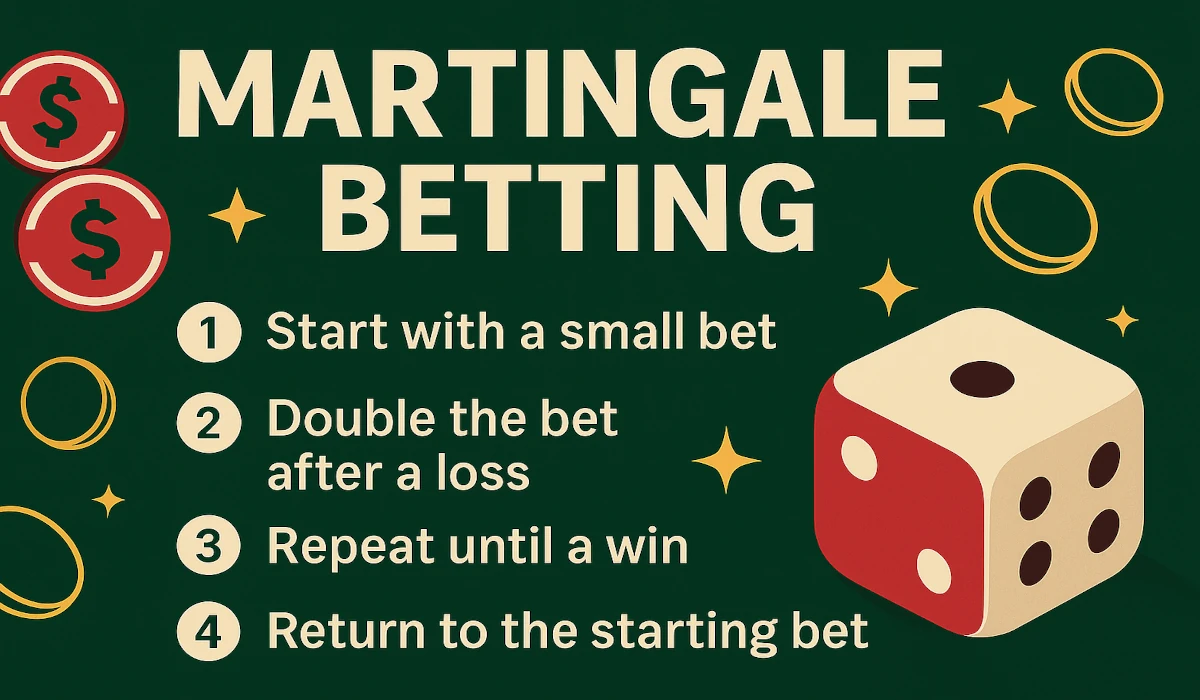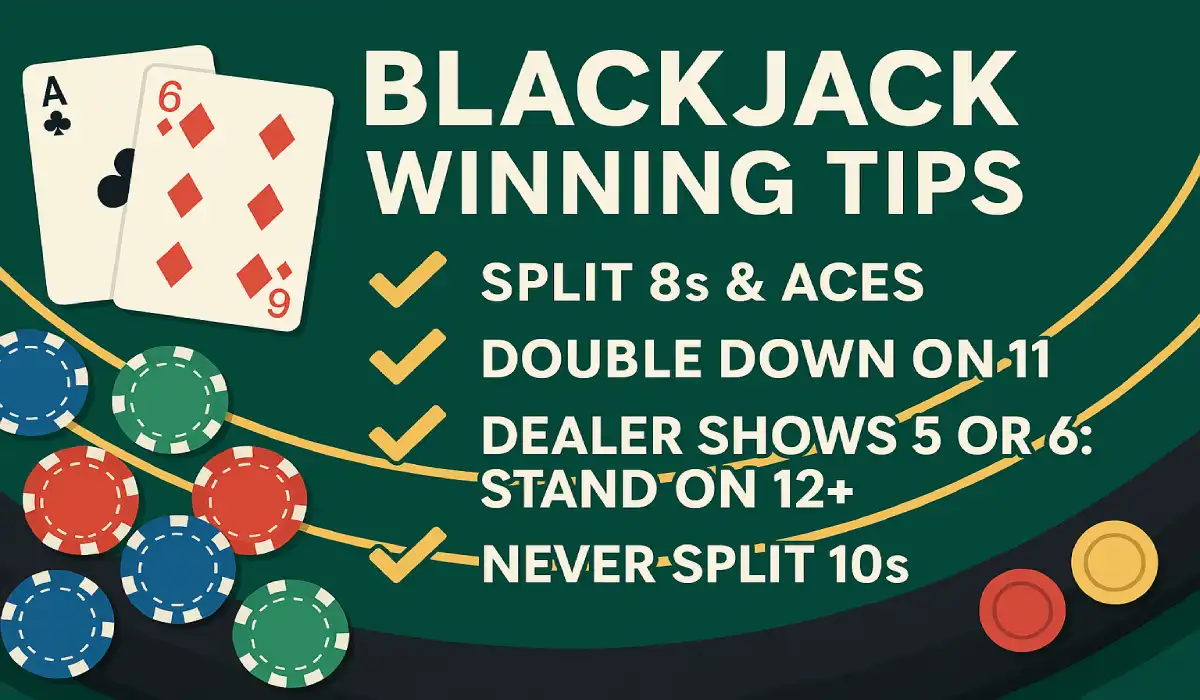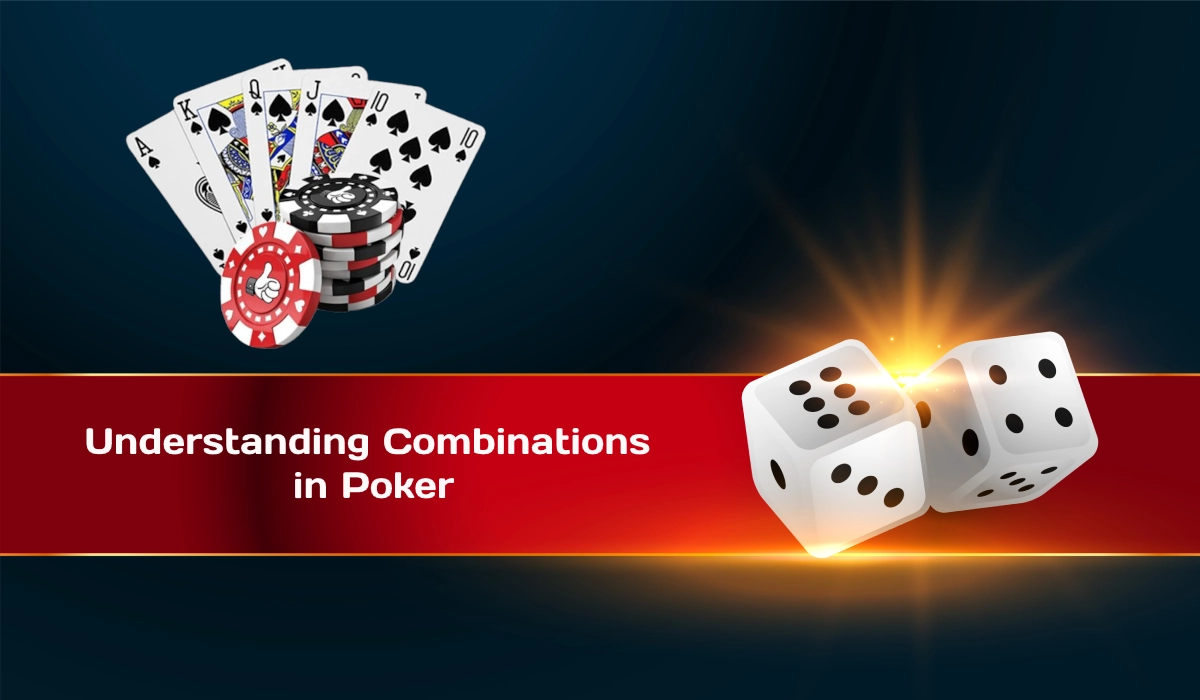
30 Apr 2025
Understanding Combinations in Poker – A Guide
🗝️ Key Takeaways
- Understanding poker combinations is essential for effective decision-making and developing a winning strategy at both casual and competitive tables across the U.S.
- Familiarity with hand rankings, from Royal Flush to High Card, allows players to accurately assess the strength of their hands in real time.
- Using simple math and combinatorics is essential in determining hand probabilities, allowing for improved betting, bluffing, and risk determination while playing.
- Players earn a technical advantage when they understand how blockers and board cards affect the action. This knowledge allows them to zero in on their opponents’ potential ranges and counter accordingly.
- Practicing combo counting improves precision and develops the fortitude to execute those well-informed decisions when the stakes are highest.
- By constantly studying and updating your strategy with combination information, you’ll be able to make consistent progress and stay flexible and adaptable to any poker scene.
Combinations in the poker sense refer to how many ways you can make a specific hand out of a full 52 card deck. American players rely on these counts to make strategic decisions, determine how to interpret the board, and calculate odds. Each hand, like a flush or full house, has a set number of ways it can show up in a game.
It’s up to players to remember and calculate the number of combinations, but realizing these numbers allows players to identify strong or even rare hands. In actual play, being able to quickly calculate your odds will help you determine when you should bet, fold, or call.
In card rooms from Las Vegas to California, players trust these counts to decide how to play hands. They rely on them to accurately gauge each cycle of the game. The following sections illustrate how combinations play a role in poker strategy.
🃏 What Are Poker Combinations Anyway?
Poker combinations are the defined mathematical groups of cards that comprise each unique poker hand. These combinations, starting with the highest royal flush all the way down to a lowly pair, are what determine who takes home the prize at the poker table.
Understanding how these combinations really work puts players over the top. It affects how they bet. From that knowledge, players can determine which hands are able to be made, assess the possible combos at play, and judge how likely they are to show up.
🎯 Defining Combinations in Poker Terms
A poker combination refers to any hand created by combining various cards, with each hand ranked in order of strength. Suits, clubs, diamonds, hearts, and spades are extremely important, as are card ranks from two all the way up to ace.
A flush is when all cards are of the same suit. In comparison, a full house mixes a three-of-a-kind with a pair. Each tribe alters the currency of a match. When two hands tie in rank, a kicker (the next highest card) can break the tie, making every card in a hand matter. Knowing the available combos during a hand can make all the difference in building a good hand or making the right fold.
🔍 Why Simple Hand Ranks Aren't Enough
Poker math is much more than memorizing hand ranks. It’s all about combinations. Combinations and odds are what players use to make their calls.
The total number of unpaired hand combos is derived by multiplying the number of each card. Paired hands like AA use the formula [(cards) × (cards – 1)] / 2. This leads to six unique combinations to be dealt AA.
These figures not only make clear what’s plausible and what’s not, but they also inform intelligent bets based on the possible combos left in the deck.
🧮 The Math Behind the Hands (Briefly)
| Poker Hand | Description |
| Royal Flush | A, K, Q, J, 10, same suit |
| Straight Flush | Five in order, same suit |
| Four of a Kind | Four cards, same rank |
| Full House | Three-of-a-kind plus a pair |
| Flush | Five cards, same suit, any order |
| Straight | Five in order, mixed suits |
| Three of a Kind | Three cards, same rank |
| Two Pair | Two different pairs |
| One Pair | Two cards, same rank |
| High Card | None of the above |
📊 Quick Look: Standard Poker Hand Hierarchy
The poker hands hierarchy is the foundation of each and every move made at the poker table. This hierarchical system determines which player will take home the pot. It affects players' overall betting strategy throughout the course of each hand, from preflop to river.
In thousands of games on playgrounds all across San Francisco and far beyond, the order does not change—Royal Flush on top and High Card on bottom. There are 2,598,960 possible five-card combinations in poker. Learning this ranking will be important for those interested in playing the game well or being able to properly evaluate results.
Here’s a look at each hand, how strong it is in comparison to others, and how it fits into the overall game.
👑 The Unbeatable Royal Flush
The Royal Flush is the highest possible hand. It includes the Ace, King, Queen, Jack, and 10 of the same suit—spades, hearts, clubs, or diamonds. That’s right, no other hand can beat it.
This hand is the rarest of all combos, coming up just once in 649,740 deals if you’re dealing from a fresh pack. Due to this uniqueness, once it arrives on the table, it can completely change the mood around the table. Experts in the game who recognize the potential will either slow play or raise their bets to draw the most money into the pot.
Others, sensing the unlikely but possible threat, may fold medium or strong hands if the board hints at a Royal Flush. When three cards for a Royal Flush land on the flop, seasoned players know just what to do. They calculate the risk-to-reward ratio in a split second and play their hand accordingly.
Players like to talk about this hand in poker games across the Bay Area, especially in San Francisco. Its iconic mystique purports it as the standard to which all poker excellence is measured.
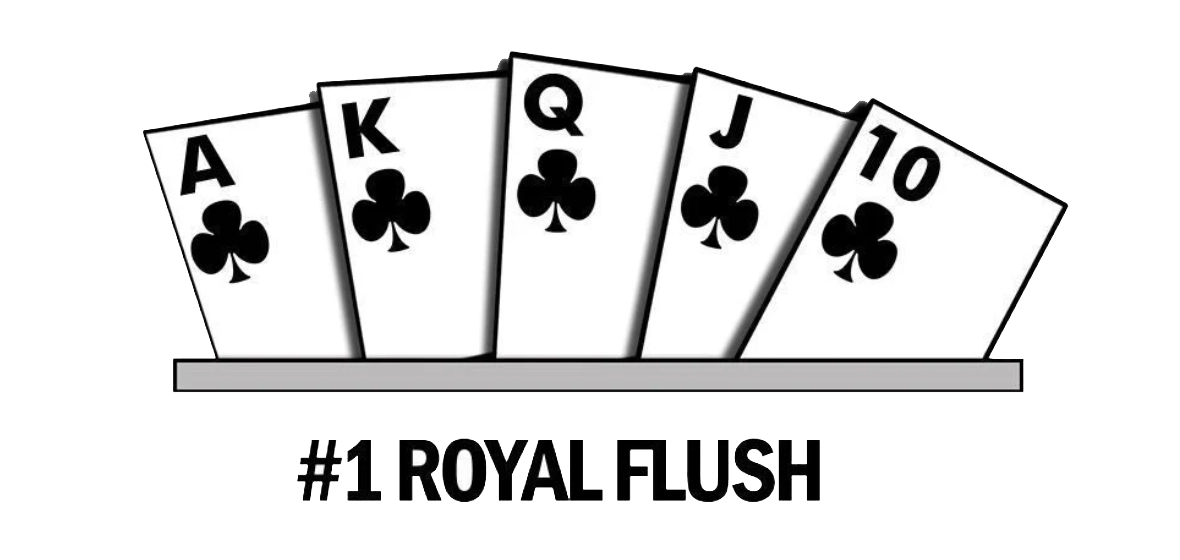
♠️ Straight Flush Facts
Just below the Royal Flush in the poker hand rankings is the Straight Flush. This hand is made up of five cards in sequence, all of the same suit, and they don't have to start at 10. An example would be 5-6-7-8-9 of hearts in that order. Players often analyze their preflop combos to determine the potential of forming such a hand.
Just as with the Royal, we don’t expect to see much of the Straight Flush. If two players reveal a Straight Flush, the one with the higher top card is the winner. For instance, 9-10-J-Q-K of clubs would trump 5-6-7-8-9 of spades, showcasing the importance of understanding poker hand rankings.
On the felt, a Straight Flush defeats all other hands, save for a Royal Flush. In heads-up situations, its odds of winning are almost guaranteed unless the adversary possesses the single hand superior to it. This hand often leads to big bets because players with high flushes or straights may feel secure—until they see they’re outdone by the deadly sequence and suit match.
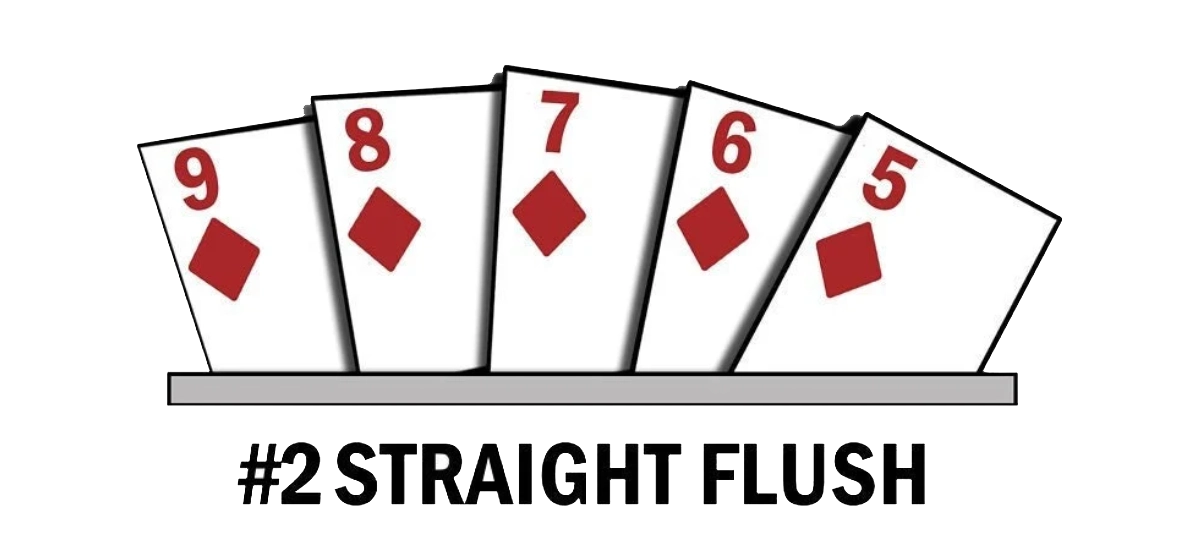
⚡ Four-of-a-Kind Power
Four-of-a-kind, sometimes known as “quads,” is a powerful poker hand. In this hand, a player has all four cards of the same rank (four Jacks). This is where the fifth card — the kicker — becomes so important in tiebreakers.
It’s important when two players have the same four-of-a-kind, which is possible when using common cards. For example, if both players had four Kings, the winner would be decided by the kicker. The player with the Ace kicker takes the pot, and the player with the 10 is out.
In informal home games, this hand gets all the attention because it’s so strong and so rare at the same time. We think it’s pretty hard to beat. In most cases, a Four-of-a-Kind will only lose to a Straight Flush or Royal Flush.
Because of this, players with quads tend to make big bets unless they fear that a better SF might be hiding on the board.
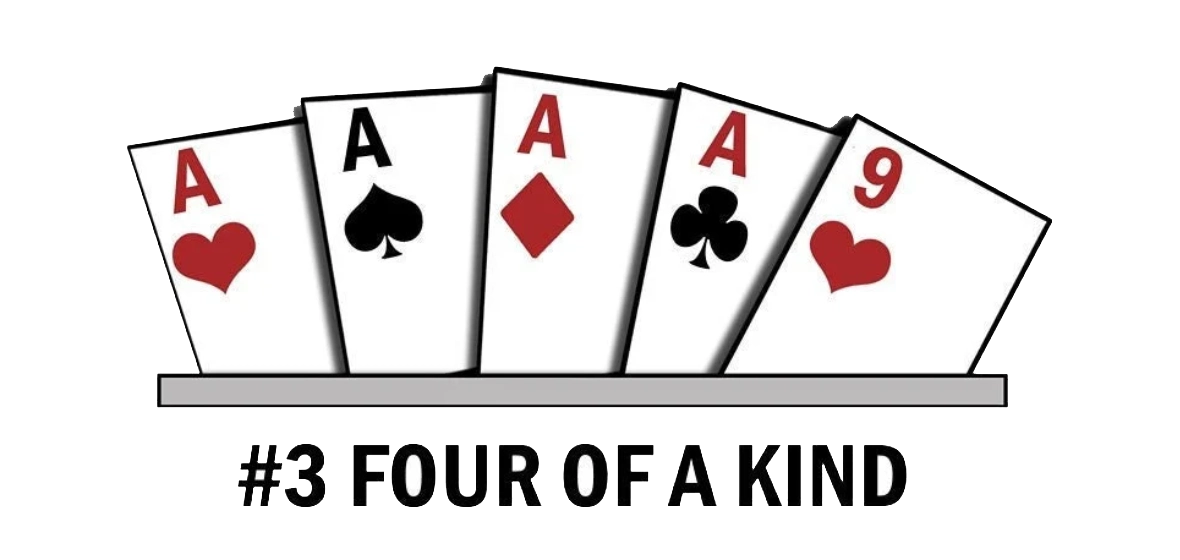
🏆 Full House Fundamentals
Three of a kind with a pair. For instance, you could have three of a kind 8s and a pair of another rank, such as 2s. This unique hand ranks higher than a Flush but lower than a Four-of-a-Kind.
When two Full Houses go up against each other, the hand with the highest three-of-a-kind portion wins. If they both match, then the pair is compared to find the high card. A Full House of Queens over Sevens (QQQ77) beats Nines Full of Kings (999KK).
The three Queens beat the three Nines, even though the second hand has a larger pair. This hand has the potential to win large pots, particularly when the community displays two matching cards.
In reality, as a poker player, you often want to “slow play” a Full House, trying to lure players into betting more with weaker hands.
♣️ Understanding Flushes
A Flush is five cards of the same suit, in any order and not in sequence. For example, 2-6-9-J-K of clubs is a Flush. What makes Flushes unique is the value of each individual card.
If two players play Flushes, the one with the highest card wins—meaning a King-high Flush beats a Jack-high one. If necessary, the second, third, etc are compared. Flushes are more frequent in Texas Hold’em and other popular games.
They’re not so common that it makes it too easy to play them. Players usually bet more when holding a high Flush, but caution is used if the board hints at a Full House or higher.
🔥 Making Straights
A Straight is five cards in a row of different suits, such as 4-5-6-7-8. The Ace can be both high (10-J-Q-K-A) and low (A-2-3-4-5), but not simultaneously. The value of the hand is based on the highest card in the sequence.
For instance, a Straight that ends with a Queen will beat one that ends with a 10. Straights are powerful, but they can be defeated by Flushes, Full Houses, and all hands above.
On the table, players with a Straight should be on the lookout for potential Flushes or Full Houses.
🎲 Three-of-a-Kind Basics
Having three-of-a-kind, aka “trips,” means you have three cards of the same rank, such as three 5s. The other two cards, known as kickers, are used to determine ties.
So, for example, 5-5-5-A-9 would beat 5-5-5-K-Q. Three-of-a-Kind is better than Two Pair and all hands rated lower, but usually vulnerable to fists rated higher.
At low-stakes, most of the players' pots will be won with trips when the board isn’t scary to over-pairs.
💡 Two Pair Explained
Two Pair is formed by having two cards of one rank and two cards of another, such as J-J-7-7-3. The higher of the two pair wins first in a tie.
For instance, Q-Q-8-8 is better than J-J-10-10. If the two pairs are identical, then the kicker (fifth card) determines. Two Pair, while frequently a strong hand, can still lose, particularly on boards that are “wet” with potential straights or flushes.
🃏 One Pair Essentials
One Pair is just having two cards of the same rank, such as 8-8-Q-6-2. At showdowns, the player who has the highest pair wins—so Aces beat Kings.
If pairs are the same, the next highest cards, or kickers, are compared. One of the most common winning hands you’ll see is One Pair, particularly when the community cards are widely scattered and disconnected from each other.
♥️ When High Card Plays
High Card is the lowest possible hand, with no pair, no run and no five cards in a suit. Ace high beats King high because the highest card wins. If they are equal, the one with the highest card wins.
High Card wins are infrequent in large pots, appearing mainly when all the players miss their draws and take the conservative route.
🔢 Steps to Calculate Poker Hand Combinations
- List all possible five-card hands.
- Use combinatorics to count each hand type.
- Compare your hand to the standard hierarchy.
- Factor in possible community cards and opponents’ ranges.
- Track the kicker’s role for tied hands.
- Adjust betting based on hand strength and board context.
Making a real count is unbeatable. It gives you a huge edge: smarter bets and quicker reads on your opponents.
The better your understanding of combinations, the more focused your play and analysis will be.
♦️ Calculating Poker Hand Combinations
Calculating poker hand combinations is one of the most important aspects of good poker strategy, particularly in Texas Hold’em. Knowing the different combinations a hand can be made from a 52-card deck gives power to the player. It allows them to determine risk, calculate bet options and predict their opposition’s actions.
It may be a simple math process, but the effects of that math are felt in every decision you make from preflop through the river. Let’s calculate how the math works. We’ll see it in action with practical examples and discuss why each step is essential to creating smart, efficient play.
1. The Basic Counting Formula Explained
The key formula for counting poker combinations is based on elementary combinatorial math. When you need to find out how many ways you can pick a group of cards from a deck, use this:
The number of combinations Number of combinations = C(n, k) = n! / (k! × (n−k)!)
In this equation, "n" is the number of total items. K" is the amount you pick, and "!" is factorial, which is the outcome of all positive integers up to that particular integer.
For example, to find how many possible two-card starting hands exist in Texas Hold’em, set n=52 (cards in a deck) and k=2 (cards dealt): C(52, 2) = 1,326. This means that there are 1,326 different unique starting hands.
Understanding these potential hand combinations forms the foundation of our preflop strategy. When players know how many ways their opponent can hold a certain hand, they can fine-tune raises, folds, and calls.
For instance, there is a reduced probability that one of your opponents holds a pocket pair. Instead, the opposite is true—they’re far more likely to have two unpaired cards. Pocket aces (AA) are one of the most popular starting hands, yet they only exist in six different combinations.
In sharp contrast, Ace-King offsuit (AKo) comes up 12 times in the deck, but only three of those combinations are suited (AKs). This lets them know what hands are most likely and what hands are least likely to occur, allowing them to make the best decisions.
2. Total Hold'em Starting Hand Combos
Breaking down starting hands by type makes these concepts clearer:
- Pocket pairs (e.g., AA, 77): 6 combinations per pair
- Suited hands (e.g., AKs): 4 combinations per suited hand
- Offsuit hands (e.g., AKo): 12 combinations per offsuit hand
For example, there are 16 possible combinations of Ace-King (AK): 4 suited and 12 offsuit. Ace-Queen (AQ) goes the same way. Pocket pairs are always six combos since order does not matter (AhAd, AhAc, AhAs, AdAc, AdAs, AcAs).
Understanding these counts cannot only save players' chips but also helps them understand how likely an opponent has a specific hand. Let’s say a very tight player three bets preflop. If you think they could hold AA, KK, or AK, rapidly figure out the total combos.
That’s 6 for AA, 6 for KK, and 16 for AK, making a total of 28. Then use that number to calculate the number of possible hands and determine their likelihood of holding each. Changing strategy based on identifying what hands are coming out the most increases aggression and defense.
Note, for instance, that there are more combos of AKo than there are of AA. When you start to see an opponent who only plays AA, you know they’re playing tighter, which means you can bluff more.
3. Counting Specific Starting Hands
Pocket pairs are hands where both hole cards match, such as KK or 33. These hands are powerful because they begin the hand in front of the majority of possible holdings and frequently remain superior by the river.
In fact, there are exactly six combos of each pocket pair. The total amount of combos for these hands plays a big role in determining their value. When you see a board like this with low cards, take note.
Knowing how many pocket pair combinations are left in play will help you read the table better. For instance, picture a flop of 8♥6♣2♦ and you’re holding 9♣9♠. In this case, you can reasonably evaluate that your opponent has less combinations available to hold a set.
Pocket pairs—two cards of the same rank, like two aces—can become three of a kind if you get a matching card on the flop (a “set”). For instance, if you have 6♠6♥ and the flop comes 6♣A♦Q♠, you hit a set, which is hard to beat.
4. How Pocket Pair Combos Work
Poker hands further divide into suited (both cards are of the same suit) and offsuit (both cards are not of the same suit). Suited hands only have four combinations, one for each suit.
So for example, AKs can be A♠K♠, A♥K♥, A♦K♦, or A♣K♣. Offsuit hands—as with AKo—are 12 combos, since any ace can pair with any king of a different suit. Suited hands can provide additional options to hit flushes and draws.
Consider J♠T♠. On a flop with any two spades this hand can outdraw most other hands and still make straights. The combos math is a tremendous tool for players to understand how often certain hands flop. Understanding this dynamic will affect your opponents’ preflop and postflop strategies.
5. Figuring Unpaired Hand Combos (Suited/Offsuit)
Blockers are when you have a card in your hand that blocks your opponent’s likely hand. For instance, if you hold A♠, it’s less likely your opponent has AA, as only three aces remain.
By getting a complete understanding of blockers, players should be able to make much tighter value bets. If you happen to be holding the K♣, you block many of the potential flush draws on that board Q♣9♣2♠. It reduces the chance that your opponent has the nuts.
Understanding this can inform your bluffing range to adjust it or allow you to call more frequently. If you’re sitting there with J♠T♠ on a 9♠8♠2♦ flop, you’re doing great. This hand blocks a number of straight draws and provides a strong option for a semi-bluff.
6. Introducing Blockers: Key Card Removal
It’s the five community cards (the “board”) that alter hand combos quickly and significantly. When the flop is dealt, certain hand combinations are removed from play. For instance, on the board K♥8♦5♦, hands like K♠T♣ increase in strength.
This is due to the fact that there are simply fewer kings for other players to have. A flop such as 7♠7♦2♣ reduces the probability that anybody has a full house unless someone was dealt pocket sevens to begin with.
Every card you see on the table changes the number of possible combos left for you and your opponents.
7. How Board Cards Change Everything
Texas Hold’em uses a two hole card, Omaha four—this all changes hand combo math. In Hold’em, each player has 1,326 possible starting hands. In Omaha there are 270,725 different possible starting four-card hands that players can be dealt.
This substantial leap from plot to stage adds another layer of difficulty to hand reading in Omaha. Players have to balance combos against a larger number of potential holdings, which usually results in them having wider ranges and more drawing hands.
Adjusting to this involves thinking in bigger picture, being prepared to face more likely better strong hands on action boards.
8. Hold'em vs. Omaha Combo Differences
Common counting combo mistakes players get the question about combo counting pretty often. The easiest mistake to make here is double counting suited hands or not accounting for blockers.
To prevent yourself from going astray, do it in a set order—count pocket pairs first, then suited, then offsuit. Pay attention to blockers. Always look at the board and your own cards for blockers.
The faster path to improved accuracy is familiarity through practice. Reference hand charts, keep a record of hand history, discuss hands with others. With practice, hand counting becomes second nature, which reduces mistakes and increases your advantage.
9. Avoiding Common Counting Mistakes
Having a firm grasp of the rankings of poker hands and poker combinatorics fuels more accurate betting and intelligent decision-making. It informs decision-making, calibrates aggression, and assists in identifying bluffers and monsters.
🔑 Why Poker Combinations Truly Matter
Poker combinations determine not just individual hands. They allow you to consider the entire spectrum of potential outcomes at each point in the process. Players who think in terms of ranges instead of absolute hands are more advanced tacticians.
It encourages them to see patterns and play in a way that reflects the actual game flow. This approach is especially important in high-stakes environments like San Francisco’s competitive poker rooms, where the pace is quick, and players rarely show their cards unless forced.
🔄 Thinking in Ranges, Not Just Hands
Shifting your thinking to combinations creates a different level of table perception. Players start thinking about all the combinations their opponent can have given what action is bet. They move away from thinking about a single possible hand.
If someone bets big after the flop, knowing what combinations of pairs, draws, or bluffs they could have helps players adapt. For example, players can see if their handstands up against the full range of likely holdings by holding an Ace with a King kicker.
This way of thinking encourages players to adapt and not follow cookie-cutter lines.
🔥 How Combos Shape Your Strategy
Calculating the frequency that specific hands appear, using combos, allows players to adjust their bet sizes better. For instance, if a player raises from an early position, combos help estimate what percentage of strong hands they have—maybe pocket pairs or suited connectors.
This understanding allows smart players to know when they should be calling, raising, or folding. It’s the basis for the tight-aggressive strategies used by the advanced deep-pocked San Francisco locals.
🎯 Gauging Opponent Hand Frequencies
Combinatorics are the basis for the probabilities behind every hand. Whether you value bet or bluff relies on how many winning or losing hands an opponent is likely to hold.
If it is identified that there are more potential busted draws in their range than actual made hands, a well-timed bluff is likely to succeed. Hand reading, or estimating what an opponent is holding based on their play, is the next step that requires this in-depth combo counting.
💥 Value Betting vs. Bluffing with Combos
Knowing when to value bet versus bluff is rooted in an understanding of hand combinations. For instance, with blockers—cards that lower the probability an opponent has a specific hand—players can choose more optimal bluffing locations.
Alternatively, if their own hand unblocks a lot of strong hands for the opponent, bluffing is less safe.
💪 Understanding Relative Hand Strength
Relative hand strength is the concept of your hand’s strength compared to what your opponents might hold. Ace-high seems strong until it meets a reasonable two-pair range.
Combinations help to understand if a hand is currently ahead or behind, informing decisions throughout the entirety of the hand from pre-flop to river.
- Compare hand strengths using combinations.
- Estimate likely hands based on action.
- Use blockers to inform bluffs.
- Adjust strategy with every new card.
- Apply combo logic to multi-street bluffs.
Putting these concepts to work not only creates better poker decisions, but more profitable ones.
💡 Use Combinations While Playing Poker
In poker, combinations shape how players read hands and make moves. Knowing how many ways certain hands can show up lets players weigh risks and pick better spots. This thinking is key, especially after the flop, when the board changes and ranges get clearer.
Combinations help players spot blockers and adjust to what they think their opponents hold.
🔍 Estimate Opponent Ranges Postflop
Postflop, players analyze opponents’ ranges in terms of combinations. Using pocket pairs as an example, the rule of 6, 3, 1, 0 informs players about the number of combos still left. For example, when a player witnesses an Ace on the board, it blocks powerful hands such as pocket Aces or Ace-King.
This move narrows the range of potential results for everyone’s hands. Identifying blockers allows players to further narrow down what hands their opponents can be holding. For example, on the board Q♣ 8♠ 4♦, if a player has Q♠ J♠, they block the strongest top pairs.
This lowers the probability that an opponent holds two Queens. This is particularly important for directing betting or checking in single-raised pots, particularly from the big blind.
🧠 Leverage Blocker Effects Mid-Hand
Blockers are important when selecting bluffing hands preflop. You lose the bluffing opportunities when the blockers are in your opponent’s hand. This creates an opportunity for sneaky bluffs to generate massive 🔥 EV 🔥.
For instance, if you hold the Ace of Spades on a flush draw board, your opponent has fewer flush combos. That way, when players make a move with air, they can apply pressure with the confidence that the nuts aren’t just sitting there.
🔢 Combine Combos With Pot Odds
Combinations with pot odds are used to hone betting further. Let’s say you decide that a particular draw should hit by the river, but only a handful of combinations could make the best hand.
A savvy player measures these combinations against potential dividends. If combos are limited, chasing isn’t worth it. If combos are indeed high and your pot odds are favorable, it’s an easy call.
🧮 Adjust Decisions Based on Counts
Intelligent play involves modifying our decisions according to actual hand counts. If your opponent is more likely to have the stronger combos, proceed with caution. If not, then value betting or bluffing is appropriate.
In tournaments, combo counting relates to ICM spots, where every chip has a different value depending on how many are left at the table.
- Restricting opponents to balanced ranges
- Remove the reverse blockers
- Value betting unblocks
- Multi-way combo counts
- ICM scenario combo analysis
Such notions encourage strategy in further and better ways, rewarding players who continue to take in information and adjust accordingly.
🚀 Deeper Dive: Advanced Combo Concepts
Advanced combo concepts in poker are way more than putting your hand range in a calculator. Knowing how many different ways a hand can be created—or prevented—figures every decision. When a player has a specific card in their hand, the likelihood of their opponent having a strong hand decreases. This isn’t permanent card removal.
The impact is most obvious in the deployed, live games throughout San Francisco and Las Vegas. Players instinctively use these principles to interpret the table. For instance, if you have the ace of spades then you can discount that your opponent has the nut flush. This one piece of information can determine if you need to be calling, raising or folding.
⚡ Card Removal Effects Magnified
As a result, pro players tend to use combo analysis as a starting point for their actions. They analyze each hand by tallying the number of possible winning hands, based on cards showing and betting behavior. When it comes to high-stakes games, where every wager is guided by data, data-driven decision-making rises to the top.
A Bay Area magic tournament expert would choose to fold a winning hand. The combo math will show them too many situations where an opponent could have a better hand, so they’ll do this. It’s how you learn these advanced techniques because you get better by adjusting your gameplay in real-time.
Use blockers to identify bluffs and unblockers to detect value bets.
🏆 How Pros Use Combination Analysis
Adjusting strategy based on combo data involves analyzing hands post-game. By examining what hands were possible and impossible, players adjust their strategy moving forward. For example, the player can adjust future calls if a certain bet size only makes sense with a narrow range.
Combo data is useful for identifying mispricing and calibrating reactions to various betting lines.
🔧 Refining Strategy with Combo Data
- Relying on gut feelings over math
- Ignoring blockers and unblockers
- Overestimating rare hands
- Failing to adjust to table dynamics
By identifying these frequent missteps in poker hand rankings, players can avoid expensive mistakes and keep their skills razor-sharp.
🔐 Ace-Blocker Combination Example
In poker, an ace-blocker hand can significantly tip the odds in your favor. Blockers are cards you hold that reduce the chance your opponent has specific strong hands.
For example, holding an ace removes one of the four aces from the deck, affecting how often you expect your opponent to hold strong combinations such as pocket aces or ace-high flushes.
In fast decision-making games like No-Limit Texas Hold’em, understanding poker hand rankings is especially important, as participants recalibrate each other’s ranges, hunting for chances to catch opponents off-guard.
For example, you start with the Ace of spades and the Five of hearts. The board comes out King of spades, Ten of spades, Four of spades.
When you make a large bet, you know there are less flushes out there. That’s because you have the ace of spades. That allows you to bluff wider, safe in the knowledge that your opponent can’t hold the nut flush.
Here’s a different example combining the Ace-blocker combination. If you have the Ace of clubs and King of diamonds, and the board is Queen, Jack, Ten with no flush, you block the nuts with an ace-high straight.
Your opponent is statistically less likely to have the absolute nuts straight. This increases your opportunity to apply more pressure with your bets.
Ace-blockers aren’t only advantageous for bluffing - they can also be valuable in calling situations.
If you possess an ace and your opponent bets big, they likely don’t have an ace-high flush, which makes it possible to call with a broader range of available combos.
In both scenarios, understanding the function of blockers equips you with additional levers to make more effective choices, ultimately enhancing your overall strategy in various poker variants.
🔑 Role of Blockers in Poker
Blockers are crucial in how high-level poker hand rankings are constructed and interpreted. What is a blocker in poker?
A blocker is a card you personally hold that makes it less likely your opponent has a strong hand. It’s an important aspect of your strategy!
For example, if you hold the ace of spades, there is one fewer ace in the deck that can complete someone else’s flush or straight.
This will completely alter how you interpret a betting pattern or size up a bluff. In San Francisco card rooms, high-stakes community games can change on a dime.
Mastering the art of blockers can make all the difference between turning a small profit into a big one—or vice versa.
Blockers are as much about what you’re aware your opponents don’t have as they are about what you hold. This kind of understanding helps you determine the likelihood that an opponent has the nuts or a strong draw.
For instance, let’s suppose you have the king of hearts and the flop comes three hearts. You know it’s less likely your opponent has the nut flush because you block one of the cards required to make it.
This can enhance everything from making your own bluff more credible to allowing you to call a large river bet with greater confidence. Blockers also play a role in narrowing the range of possible hand combinations.
If you are able to block a key card, then you can reduce the total combinations that make up your opponent’s potential range. This has been the case for both online and especially live games throughout California.
Often, players rely on blockers to guide them in making difficult river calls. While blockers don’t change the raw math of combos, they shift the odds in subtle ways, allowing sharp players to make more informed choices.
📊 Strategic and Actual Frequencies
The difference between theoretical combinations and real table play in poker is essential. Recognizing this gap can do wonders for your strategy.
In an ideal world, each poker hand ranking—from high card to royal flush—would have a predetermined probability of occurring.
Those odds are derived from the mathematics of the 52-card deck. In fact, you should hit a flush only about 1 in every 500 hands.
Speaking of rarity, let’s consider a full house at the same time. This math is not fuzzy or open to negotiation. It’s important to anyone who cares at all about knowing how rare or common a hand is.
Actual table play isn’t always in line with these figures, as strategy and human decision-making come into the equation.
Consequently, hands that we get to showdown with are often stronger than by chance. In actual play, the top pair, 2pair+, appears more often. This result goes against what the math would suggest should happen.
The fit of the table is a factor in what poker combinatorics appear, whether it plays tight or loose. For example, in a nitty game, large holdings are revealed more often as the weak holdings don’t make it to showdown. In looser games, you encounter more mixed combinations at showdown.
Understanding both the strategic odds and the actual occurrences in the game helps players to make better value bets and bluffs. When you understand the possible flop combinations that appear the most at your table, you can better strategize your next move with certainty.
⚠️ Sidestep These Combination Pitfalls
Avoid these combination mistakes. It’s one thing to sit down and learn the math behind combinations in poker. It’s more about leveraging that math to inform the best decision for every call, fold, and bluff you play per session. Many skilled players in places like San Francisco, where game quality is high, know that small mistakes with combinations can add up fast.
This section explains these frequent pitfalls and provides practical methods to better hone a player's strategy.
🎯 Don't Ignore Your Own Blockers
Blockers—cards in your hand that take potential combos out of your opponent’s range—are extremely important. Ignoring your blockers results in ineffective bluffs or a lack of value betting. It’s an exceptional benefit when you hold an ace, and the board begins to show a potential flush.
You can bluff with more confidence because you block the nut flush. Most players wildly underestimate the number of combos an opponent might have, often overcounting by forgetting about their own blockers. To address this, prioritize real-time counting.
Master them by practicing with hand matrix charts or apps. Make a note of which cards increase the total combinations for your best made hands or draws. Working with partners to test one another’s knowledge can be beneficial as well.
⚖️ Avoid Miscalculating Hand Frequencies
Incorrectly counting what hands your opponent might be holding will result in poor reads. Many players miscalculate the frequency of opponents having strong hands such as sets. Some weirdly only count the combos of one type, like top pair, and forget about having a balanced range.
To avoid this, do the opposite: slow down, double check your math. Practice with hand matrix programs outside of the game to see where you went wrong and to improve your speed.
🧩 Context Matters More Than Raw Numbers
The true value of a hand combo is dynamic based on the board state, position, and what your opponent is on. One team could be dominant on one type of board, awful on an opposite type. So, if you’re playing against a very tough player, push all your chips in on that flush draw.
If you’re up against a very loose player, simply call instead. Never stop tailoring to your opponents and the pace of play.
- Count combos from board runouts after hands.
- Run quizzes with friends.
- Use hand matrix software.
- Review hands with a coach.
- Track your results in a log.
Just like practicing away from the field makes you faster and more precise. Continue to practice this, and you’ll begin to notice angles other people overlook.
🧠 Sharpen Your Combination Counting Skills
Practicing combination counting, even away from the felt, can give a player a significant edge. It’s not only a matter of rote number memorization, either. When you know how many ways your opponent could have a certain hand, you start to see the game in a new light.
Developing this skill breeds confidence, hones your reads, and allows you to make more profitable calls and folds. Blockers are the most powerful and influential cards in the game. They are cards that eliminate the hands your opponent could have, like seeing a heart on the table when you’re waiting for a flush.
The stronger you get, the better you are able to identify these areas of improvement and quickly pivot.
📚 Practice Away From the Table
Begin with drills that isolate hand combination counts. One of the best ways to do this is with a simple deck of cards. Give your friends equally random boards, then show them how many different ways a player can make a flush or straight.
Watch your accuracy and speed improve over time. Once you start to feel comfortable, increase the difficulty level. For example, consider blockers or attempt to count the combination with two opponents in the hand.
Record your findings in a dedicated notebook or a spreadsheet to track your progress over time.
🔢 Start with Simple Counting Exercises
Work on the fundamentals early, starting with premium pocket pairs. The “rule of 6, 3, 1, 0” is a favorite for this. For paired hands, remember that there are a total of 16 combinations.
Of these, only 4 are on-target, while the other 12 are off-target hands. Start with realistic, everyday scenarios. For instance, figure out how many times your opponent could have a top pair or a flush draw on different board runouts.
✨ Focus on Common Game Situations
Actual poker hands can constrain combinations. Focus on practicing with boards that have a lot of common suits or when you hold an important card. Analyze hand histories and try to put your opponents on the range of possible combos.
Then, check your work against the ultimate list of 1,326 unique pre-flop combinations. With practice, these habits result in improved, more rapid decision making.
🔒 Conclusion
Poker combos are the foundation for every clever action you can take on the felt. Understanding them makes it easier to identify strong hands, identify bluffs, and read the board like an expert. In actual games, like a cash game in downtown San Francisco or a raucous Friday night home game, combos turn junk cards into lethal instruments. They provide players the keenest edge they require to prosper. With counting combos, even the most difficult folds become much easier and you stay more mentally engaged in the game, even in large pots. Once you sit down to play, put into practice what you’ve learned on this page. Play the hand analysis game. Consider deconstructing a hand after every session, or trade stories with buddies over difficult hands. Continue to learn about combos, question, and stay engaged. Your game will continue to improve, and so will your advantage.
Frequently Asked Questions❓
What are combinations in poker?
Combinations in poker, such as poker hand rankings, refer to the various ways you can create certain hands with the cards you’re dealt, helping you calculate odds and decide on the best betting action.
Why do poker combinations matter?
Poker combinations are crucial as they help you grasp the probabilities of completing various hands, including paired hands and unpaired hands. Understanding these poker hand rankings can enhance your strategy, giving you the best shot at victory.
How do I calculate combinations in poker?
Use the combination formula: C(n, r) = n! / (r!(n−r)!) where n is the total cards and r is the number you need. For instance, to calculate the number of 5-card hands from a standard deck of 52 cards, you would use C(52, 5).
Can knowing combinations improve my poker game?
Yes. An understanding of poker combinatorics will aid you in reading your opponents, determining pot odds, and making the decision to bet, call, or fold. It’s an essential ability to know for the intent poker player.
Are combinations the same in Texas Hold'em and other poker games?
No. Depending on the rules of the game and how many cards are being dealt, the number of poker hand rankings may vary. Since Texas Hold’em involves community cards, it alters the total combinations of hands that are possible.
What mistakes do players make with combinations?
Too often, poker players put too much faith in a hard-to-make hand, neglecting the importance of poker hand rankings and the many combos available. By avoiding these pitfalls, you’ll make higher level plays and enjoy a much more successful poker room experience.





